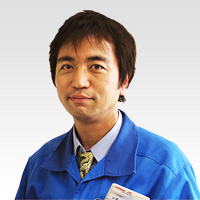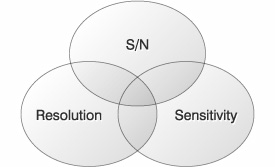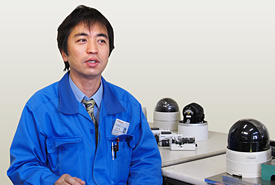Tsuyoshi Yamaura - Product Engineer
~ High quality picture

The V.NETWORKS series of IP cameras are a natural extension of JVC's analog cameras noted for their high picture quality. The VN-V25U and VN-V26U, dual-stream products of the V.NETWORKS lineup released in 2007 and 2008, have particularly earned praise for their picture quality.
The following is an interview with one of the engineers who have pursued this high picture quality.
- Tell us why the VN-V25/26 series have such particularly good picture quality.
A number of points come to mind, so it's difficult to narrow it down to one reason, but considering that users have praised the VN-V25/26 series for their "beautiful" picture, I can say that the "picture making" process has had a great impact.
Of course, this comes on top of doing a thorough job on the "hard side" of basic components, like component selection and mounting approach, but even with the same hardware, one can make fuller use of its capacity to provide a very high quality picture by improving how that hardware is used. That is "picture making," which is what we are good at. This is true whether it's an analog or network camera. The picture quality of the V25/26 is the result of our "picture making" know-how.

- What does good "picture making" require ?
First, you have to consider what a beautiful picture is, and when you do you realize there are, broadly speaking, three major elements that create that picture's quality.
Those are "sensitivity," "S/N" and "resolution." Put simply, "sensitivity" is related to the capacity of a system to receive light, "S/N" to the picture's sensitivity to noise, and "resolution" to the picture's detail. These elements have to be adjusted to get a beautiful picture, but in practice the three elements are closely interrelated, so that if you emphasize one, it has a negative effect on the others.
To give an example, if we raise the "sensitivity" to receive more light, it means we can capture images even of dark areas, but if we go too far, it affects "S/N" and increases noise. Or, if we raise "resolution," we can get a high-detail picture, but "sensitivity" declines and this tends to cause dark pictures. So it's meaningless to pick one element or another to raise or lower; instead we have to improve each element for maximum benefit without harming the other elements, ultimately finding a delicate balance. In any case, doing this work requires a good eye for finding the kinds of problems that appear in pictures. You also need the technical expertise to analyze and make improvements and the persistence never to compromise and say, "Oh, that's good enough." You can't just say "That's beautiful for some reason," or "That's not beautiful for some reason." You have to make definite decisions-decide what exactly went wrong and what you're going to do about it-and then take action.
- In what other ways has JVC been detail-oriented with the V25/26 ?
The V25/26 also get their high picture quality from the way in which all components, even the power source, are affixed to the camera. To reduce noise, these cameras use a different component layout from earlier JVC models. We accomplished what we did by really understanding the characteristics of even the smallest components and fully considering what impact they would have on surrounding circuits.

- So the beautiful picture you get from the V25/26 is the result of JVC's commitment to picture making ?
Exactly. In particular, JVC employs many engineers with high standards for judging picture quality. Here we are right next door to the place where ProHD were developed, so it's only natural that we have a good eye for this kind of thing and that our standards are so high. Our engineers are always exchanging information, so our ability to share our picture making know-how with each other is a great strength. We're very proud of our commitment to picture making, which is a big part of our lead over the competition.
- When sizing up the picture quality of a camera, what part should you focus on? Tell us what to look at so that even an untrained person would understand.
Unlike ordinary cameras, CCTV cameras are used in a variety of environments for many different purposes. The evaluation point you use will vary depending on the user's application, but in terms of picture quality, you should start by checking the quality in "dark places" and "(very) bright places." As a rule, any manufacturer's camera will provide good picture quality in so-called ordinary settings where there is a moderate amount of light. The real test is how much noise the camera picks up in dark places and how much so-called whiteout appears in extremely bright places. Whether the camera can capture its subject properly in a severe environment-that is the key point.